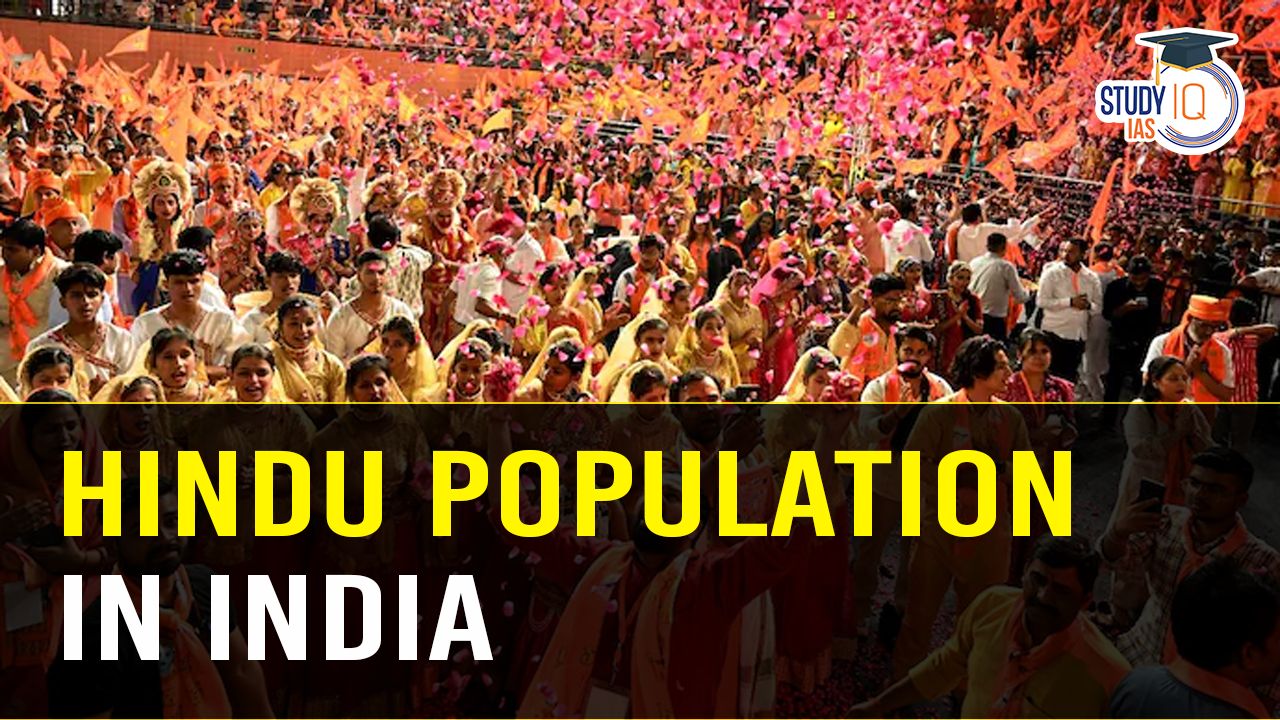Table of Contents
As per a new analysis by the Economic Advisory Council to the Prime Minister (PM-EAC), the share of the Hindu population in India has dipped by 7.82 per cent while that of Muslims, Christians, and Sikhs has seen a rise in the 65 years between 1950 and 2015. In this article, we will be discussing the Hindu Population in India, declining factors, and trends.
Hindu Population in India
- The Economic Advisory Council to the Prime Minister (PM-EAC) released a comprehensive analysis titled “Share of Religious Minorities: A cross country analysis”, examining religious demographic shifts in India over a 65-year period from 1950 to 2015.
- The report highlights a decline in the share of the Hindu population accompanied by a rise in the Muslim, Christian, Sikh, and Buddhist populations during the same period.
Key Findings of the Report
Demographic Shifts: The Hindu population decreased by 7.82%, while the Muslim population rose from 9.84% to 14.09%. Similarly, the Christian, Sikh, and Buddhist populations also saw increases.
| Year | Hindu Population (Percentage) |
|---|---|
| 1950 | 84.97 |
| 1960 | 83.45 |
| 1970 | 82.73 |
| 1980 | 82.29 |
| 1990 | 81.53 |
| 2000 | 80.45 |
| 2010 | 79.80 |
| 2015 | 78.15 |
| 2020 | 77.21 |
| 2024 | 76.45 (Projected) |
- Jain and Parsi Communities: In contrast, the Jain and Parsi communities experienced declines in their population shares.
- Global Context: The analysis, based on data from 167 countries, suggests that India’s demographic changes align with global trends observed in Europe but stand out compared to its neighbouring countries.
- Factors Behind Changes: The report remains agnostic about the specific causes of these demographic shifts but suggests that policy actions, political decisions, and societal processes may have created a conducive environment for increasing diversity.
Policy Implications
- The report suggests that the observed demographic changes are indicative of a conducive environment for increasing diversity in Indian society.
- It refrains from attributing specific causes to these demographic shifts but acknowledges the role of policy actions, political decisions, and societal processes.
- The study highlights the importance of defining and protecting minority rights within a nation, citing India’s success in fostering diversity compared to its neighbours.
Comparison with Global Trends
- The report draws parallels between India’s demographic changes and those observed in high-income liberal democracies, particularly OECD countries.
- Similar declines in the share of majority religious denominations have been noted in OECD nations, emphasizing the global nature of these demographic shifts.
Way Forward
Moving forward, India must embrace its diverse cultural fabric, safeguarding minority rights and promoting inclusivity. Strengthening legal protections and addressing socio-economic disparities are imperative. Foster interfaith dialogue, emphasizing shared values and peaceful coexistence. Utilize data-driven policies, engaging civil society and media to combat misinformation. Cultivate resilience and solidarity, building a society where every citizen feels valued and empowered. Through these concerted efforts, India can forge a path towards a more equitable, cohesive, and prosperous future for all.


 India Hosts UNESCO’s 20th Intangible C...
India Hosts UNESCO’s 20th Intangible C...
 Ramgarh Vishdhari Tiger Reserve: Rajasth...
Ramgarh Vishdhari Tiger Reserve: Rajasth...
 India’s Right to Disconnect Bill 2025:...
India’s Right to Disconnect Bill 2025:...

























